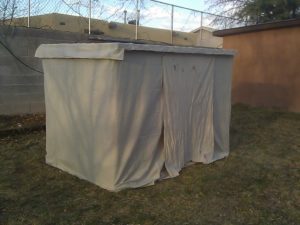If you read a lot of astronomy forums there seems to be an attitude of “there’s no science left for amateurs to do in astronomy.” This is usually followed by “well, let the surveys do it!” These comments are sometimes valid, sometimes they are not. It would seem to me, however, that we are entering the golden age of amateur science in astronomy!
At present astrophotography is driving technology changes in astronomy. User friendly scope systems abound and terrific cameras that professionals could only dream about a few years ago can be ordered off of the internet. For those of us that perused the Sears Catalogs drooling over a 90 mm refractor, the availability, size, price and quality are almost unbelievable! Who would have thought that you could buy an 8″ telescope that can be used out of the box to do imaging, for less than & 1,300! That you could buy a cheap imager to do planetary imaging for $75, that will give you pictures to rival the best planetary images taken in the 1960’s with much larger telescopes.
I recently purchased EC Slipher’s book on his Mars work at Lowell Observatory. When it was released in the early 1960’s it was the definitive work of it’s time. This work was the culmination of years of pains taking imaging with the finest telescopes of the day. Now, however, I have a friend that takes much better images of Mars with a 3.5 inch Questar and video camera! Dr. Slipher would be astounded at the quality of imaging coming out of the amateur community with modest equipment! I often wonder what Lowell, Slipher or Herschel would think of today’s amateurs and equipment?
So back to the original idea. Is there anything left for an amateur to do? The answer is an unadulterated “yes!” The Association of Variable Star Observers has a data base of variables called the VSX. In this database are 325,019 stars. More are being added all the time. Many of these stars have been added in the last 20 years and are a product of survey work. If you peruse this database you will find that only a few of these stars have ever been issued an AUID number (identifying number for the AAVSO database) so there are no observations outside of the original survey. Some of the surveys are quite extensive and little new observation is needed and others are in need of confirmation of data. You could stay busy with just this database alone for the rest of your life!
There is also visual observations of stars. Both of my CCD’s just flat out can’t get good magnitude measurements on stars that are brighter than about 9th magnitude. For brighter stars eyes are still good measurement instruments. Plus, there are legacies of observations that go back 100+ years and it would be a shame not to continue that legacy. There are also area’s like cataclysmic variables, nova’s, supernova’s and white dwarfs that are good targets for amateur contributions to science.
Something I am contemplating doing is to point my telescope at a place in the night sky and repeatedly image it every clear night for a year or two. It would be a poor man’s Kepler mission. In this type of study you could discover a new planet, nova, variable or nothing at all! It is possible to do this kind of thing because you own the equipment! Professionals seldom have the luxury of using a scope for such a long period of time on such a long shot effort.
Today is the best day of astronomy! We live in a time of unprecedented opportunities and technology. Enjoy it!
Paul Temple
